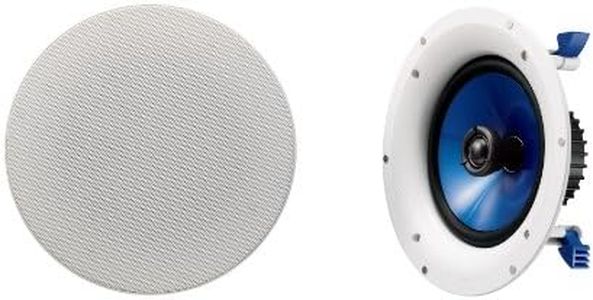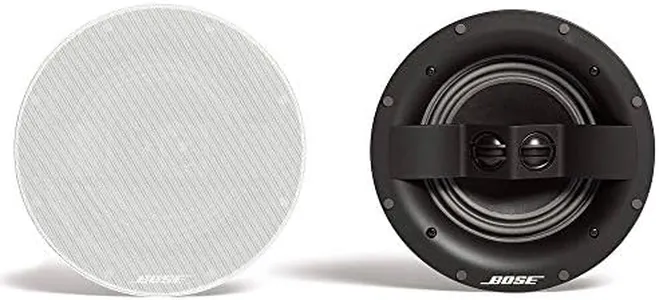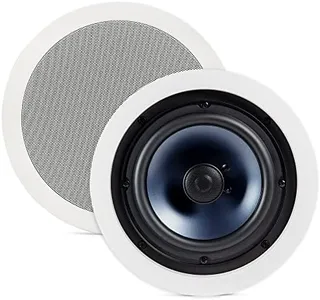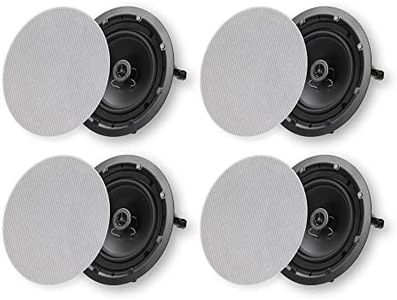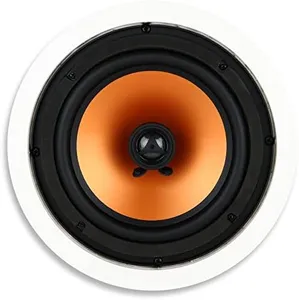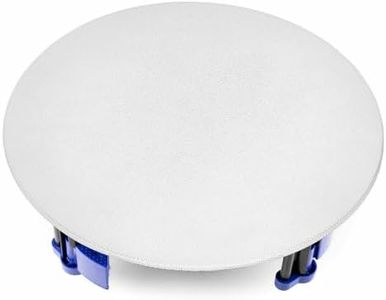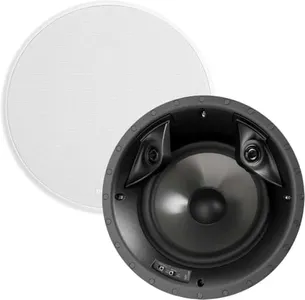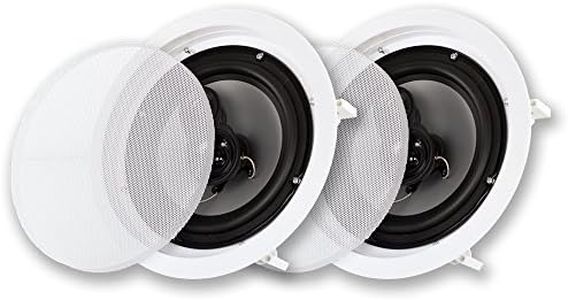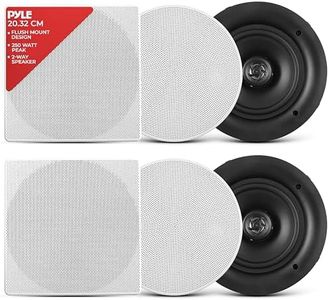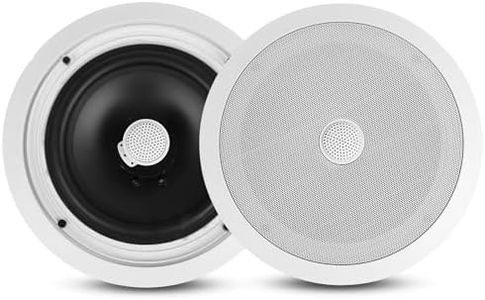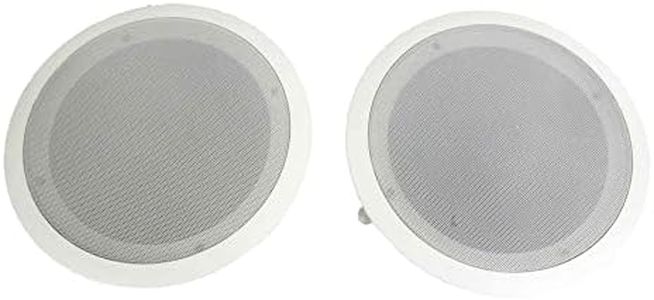We Use CookiesWe use cookies to enhance the security, performance,
functionality and for analytical and promotional activities. By continuing to browse this site you
are agreeing to our privacy policy
10 Best 8 Inch Ceiling Speakers
From leading brands and best sellers available on the web.Buying Guide for the Best 8 Inch Ceiling Speakers
Choosing the right 8-inch ceiling speakers is all about understanding your room, your audio needs, and the basic features that affect sound quality and installation. Whether you’re aiming for background music, immersive home theater sound, or clear speech in a workspace, knowing what each specification means will help you match the speakers to your personal listening goals and the space you have.Speaker Size (8-inch driver)The '8-inch' in ceiling speakers refers to the diameter of the main driver, not the overall size of the speaker. This size plays a big role in sound output, particularly in bass and overall loudness. Generally, larger drivers like 8-inch ones produce deeper bass and can fill larger spaces more easily compared to smaller drivers (like 6.5-inch or 5.25-inch). If you want richer, fuller sound and you're installing in a bigger room, 8-inch drivers are a good choice. For very small rooms or strictly background music, you might even consider going smaller.
Power Handling (Wattage)Power handling indicates how much power (in watts) a speaker can handle from your amplifier or receiver without getting damaged. This is often listed as RMS (continuous) and peak power. Higher power handling means the speaker can play louder without distortion. If you like to play music loudly or your room is large, look for speakers with higher power handling. For softer, background music or smaller rooms, lower wattages are usually sufficient. Matching your amplifier's output with your speaker's power handling ensures good sound and prevents damage.
Impedance (Ohms)Impedance, measured in ohms, refers to the resistance the speaker gives to the electrical current from the amplifier. Most ceiling speakers are rated at 8 ohms, but you might see 4- or 6-ohm models as well. Lower impedance speakers can draw more power, which can lead to louder sound but also needs your amplifier to support that load. For most home setups, 8 ohms is standard and keeps things simple. Check your amplifier's compatibility, and choose the impedance that matches for safe and effective operation.
Frequency ResponseFrequency response tells you the range of sounds the speaker can reproduce, from low bass to high treble, and is listed as a range (for example, 45 Hz – 20,000 Hz). A wider frequency range means the speaker can play both deep bass and clear highs, offering more complete sound. If you like music with a lot of bass or are using the speakers as part of a home theater system, look for a lower starting point (Hz) for better bass. For general use, most 8-inch speakers provide ample range for enjoyable listening.
Sensitivity (dB)Sensitivity measures how efficiently a speaker turns power into loudness, usually noted in decibels (dB). Higher sensitivity (around 88 dB or more) means the speaker will play louder at a given power level. If you have a low-powered amplifier or want to fill a large room, high-sensitivity speakers are usually a smart choice. For smaller or quiet rooms, lower sensitivity may be just fine.
Installation Depth and Cutout SizeThese specs tell you how much space the speaker will need in your ceiling for proper installation. Installation depth is how far the speaker extends above the ceiling surface, and cutout size is the diameter of the hole you’ll need to make. Check your ceiling's depth (including any obstructions or insulation) to make sure the speaker will fit. Always measure before buying, especially in older homes or rooms with limited ceiling space. Matching these dimensions ensures a clean, professional-looking installation.
Weather Resistance / Moisture RatingSome ceiling speakers are rated for use in damp or humid environments like bathrooms, kitchens, or covered patios. These are called moisture or weather-resistant speakers, and can withstand humidity or minor splashes. If you're installing in a kitchen, bathroom, or outdoor area, look for this feature. For living rooms and dry areas, standard indoor speakers are sufficient.
Pivoting TweetersMany 8-inch ceiling speakers include tweeters (the part that produces high-frequency sounds) that can be aimed or tilted, known as pivoting tweeters. This feature helps you direct sound more precisely, improving how music or dialogue sounds in your favorite listening spot. If your speakers won’t be installed directly above your main seating area, pivoting tweeters are a valuable option for tailoring sound to your needs.
Grille Type (Paintable/Flush Design)Ceiling speaker grilles cover the speaker for a clean look and often can be painted to match your ceiling. Some grilles are magnetic for easy removal and a sleek appearance. If you care about aesthetics and want the speakers to blend in, check that the grille is paintable and sits flush with the ceiling.
